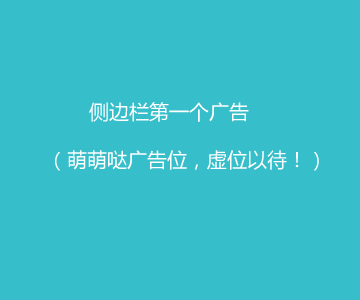Http协议的重要性相信不用我多说了,HttpClient相比传统JDK自带的URLConnection,增加了易用性和灵活性(具体区别,日后我们再讨论),它不仅是客户端发送Http请求变得容易,而且也方便了开发人员测试接口(基于Http协议的),即提高了开发的效率,也方便提高代码的健壮性。因此熟练掌握HttpClient是很重要的必修内容,掌握HttpClient后,相信对于Http协议的了解会更加深入。
org.apache.commons.httpclient.HttpClient与org.apache.http.client.HttpClient的区别
Commons的HttpClient项目现在不再被开发,已被Apache HttpComponents项目HttpClient和的HttpCore模组取代,提供更好的性能和更大的灵活性。

一、简介
HttpClient是Apache Jakarta Common下的子项目,用来提供高效的、最新的、功能丰富的支持HTTP协议的客户端编程工具包,并且它支持HTTP协议最新的版本和建议。HttpClient已经应用在很多的项目中,比如Apache Jakarta上很著名的另外两个开源项目Cactus和HTMLUnit都使用了HttpClient。
下载地址: https://mvnrepository.com/artifact/org.apache.httpcomponents/httpclient
二、特性
基于标准、纯净的java语言。实现了Http1.0和Http1.1
以可扩展的面向对象的结构实现了Http全部的方法(GET, POST, PUT, DELETE, HEAD, OPTIONS, and TRACE)。
支持HTTPS协议。
通过Http代理建立透明的连接。
利用CONNECT方法通过Http代理建立隧道的https连接。
Basic, Digest, NTLMv1, NTLMv2, NTLM2 Session, SNPNEGO/Kerberos认证方案。
插件式的自定义认证方案。
便携可靠的套接字工厂使它更容易的使用第三方解决方案。
连接管理器支持多线程应用。支持设置最大连接数,同时支持设置每个主机的最大连接数,发现并关闭过期的连接。
自动处理Set-Cookie中的Cookie。
插件式的自定义Cookie策略。
Request的输出流可以避免流中内容直接缓冲到socket服务器。
Response的输入流可以有效的从socket服务器直接读取相应内容。
在http1.0和http1.1中利用KeepAlive保持持久连接。
直接获取服务器发送的response code和 headers。
设置连接超时的能力。
实验性的支持http1.1 response caching。
源代码基于Apache License 可免费获取。
三、使用方法
使用HttpClient发送请求、接收响应很简单,一般需要如下几步即可。
创建HttpClient对象。
创建请求方法的实例,并指定请求URL。如果需要发送GET请求,创建HttpGet对象;如果需要发送POST请求,创建HttpPost对象。
如果需要发送请求参数,可调用HttpGet、HttpPost共同的setParams(HetpParams params)方法来添加请求参数;对于HttpPost对象而言,也可调用setEntity(HttpEntity entity)方法来设置请求参数。
调用HttpClient对象的execute(HttpUriRequest request)发送请求,,该方法返回一个HttpResponse。
调用HttpResponse的getAllHeaders()、getHeaders(String name)等方法可获取服务器的响应头;调用HttpResponse的getEntity()方法可获取HttpEntity对象,该对象包装了服务器的响应内容。程序可通过该对象获取服务器的响应内容。
释放连接。无论执行方法是否成功,都必须释放连接
相关jar包
commons-cli-1.2.jar
commons-codec-1.9.jar
commons-logging-1.2.jar
fluent-hc-4.5.1.jar
httpclient-4.5.1.jar
httpclient-cache-4.5.1.jar
httpclient-win-4.5.1.jar
httpcore-4.4.3.jar
httpcore-ab-4.4.3.jar
httpcore-nio-4.4.3.jar
httpmime-4.5.1.jar
jna-4.1.0.jar
jna-platform-4.1.0.jar
四、实例
GET请求
/**
* 发送 get请求
*/
public void get() {
CloseableHttpClient httpclient = HttpClients.createDefault();
try {
// 创建httpget.
HttpGet httpget = new HttpGet("");
System.out.println("executing request " + httpget.getURI());
// 执行get请求.
CloseableHttpResponse response = httpclient.execute(httpget);
try {
// 获取响应实体
HttpEntity entity = response.getEntity();
System.out.println("--------------------------------------");
// 打印响应状态
System.out.println(response.getStatusLine());
if (entity != null) {
// 打印响应内容长度
System.out.println("Response content length: " + entity.getContentLength());
// 打印响应内容
System.out.println("Response content: " + EntityUtils.toString(entity));
}
System.out.println("------------------------------------");
} finally {
response.close();
}
} catch (ClientProtocolException e) {
e.printStackTrace();
} catch (ParseException e) {
e.printStackTrace();
} catch (IOException e) {
e.printStackTrace();
} finally {
// 关闭连接,释放资源
try {
httpclient.close();
} catch (IOException e) {
e.printStackTrace();
}
}
}
POST请求
/**
* 发送 post请求访问本地应用并根据传递参数不同返回不同结果
*/
public void post() {
// 创建默认的httpClient实例.
CloseableHttpClient httpclient = HttpClients.createDefault();
// 创建httppost
HttpPost httppost = new HttpPost(":8080/myDemo/Ajax/serivceJ.action");
// 创建参数队列
List<NameValuePair> formparams = new ArrayList<NameValuePair>();
formparams.add(new BasicNameValuePair("type", "house"));
UrlEncodedFormEntity uefEntity;
try {
uefEntity = new UrlEncodedFormEntity(formparams, "UTF-8");
httppost.setEntity(uefEntity);
System.out.println("executing request " + httppost.getURI());
CloseableHttpResponse response = httpclient.execute(httppost);
try {
HttpEntity entity = response.getEntity();
if (entity != null) {
System.out.println("--------------------------------------");
System.out.println("Response content: " + EntityUtils.toString(entity, "UTF-8"));
System.out.println("--------------------------------------");
}
} finally {
response.close();
}
} catch (ClientProtocolException e) {
e.printStackTrace();
} catch (UnsupportedEncodingException e1) {
e1.printStackTrace();
} catch (IOException e) {
e.printStackTrace();
} finally {
// 关闭连接,释放资源
try {
httpclient.close();
} catch (IOException e) {
e.printStackTrace();
}
}
}
表单提交
/**
* post方式提交表单(模拟用户登录请求)
*/
public void postForm() {
// 创建默认的httpClient实例.
CloseableHttpClient httpclient = HttpClients.createDefault();
// 创建httppost
HttpPost httppost = new HttpPost(":8080/myDemo/Ajax/serivceJ.action");
// 创建参数队列
List<NameValuePair> formparams = new ArrayList<NameValuePair>();
formparams.add(new BasicNameValuePair("username", "admin"));
formparams.add(new BasicNameValuePair("password", "123456"));
UrlEncodedFormEntity uefEntity;
try {
uefEntity = new UrlEncodedFormEntity(formparams, "UTF-8");
httppost.setEntity(uefEntity);
System.out.println("executing request " + httppost.getURI());
CloseableHttpResponse response = httpclient.execute(httppost);
try {
HttpEntity entity = response.getEntity();
if (entity != null) {
System.out.println("--------------------------------------");
System.out.println("Response content: " + EntityUtils.toString(entity, "UTF-8"));
System.out.println("--------------------------------------");
}
} finally {
response.close();
}
} catch (ClientProtocolException e) {
e.printStackTrace();
} catch (UnsupportedEncodingException e1) {
e1.printStackTrace();
} catch (IOException e) {
e.printStackTrace();
} finally {
// 关闭连接,释放资源
try {
httpclient.close();
} catch (IOException e) {
e.printStackTrace();
}
}
}
文件上传
/**
* 上传文件
*/
public void upload() {
CloseableHttpClient httpclient = HttpClients.createDefault();
try {
HttpPost httppost = new HttpPost(":8080/myDemo/Ajax/serivceFile.action");
FileBody bin = new FileBody(new File("F:\\image\\sendpix0.jpg"));
StringBody comment = new StringBody("A binary file of some kind", ContentType.TEXT_PLAIN);
HttpEntity reqEntity = MultipartEntityBuilder.create().addPart("bin", bin).addPart("comment", comment).build();
httppost.setEntity(reqEntity);
System.out.println("executing request " + httppost.getRequestLine());
CloseableHttpResponse response = httpclient.execute(httppost);
try {
System.out.println("----------------------------------------");
System.out.println(response.getStatusLine());
HttpEntity resEntity = response.getEntity();
if (resEntity != null) {
System.out.println("Response content length: " + resEntity.getContentLength());
}
EntityUtils.consume(resEntity);
} finally {
response.close();
}
} catch (ClientProtocolException e) {
e.printStackTrace();
} catch (IOException e) {
e.printStackTrace();
} finally {
try {
httpclient.close();
} catch (IOException e) {
e.printStackTrace();
}
}
}
SSL链接
/**
* HttpClient连接SSL
*/
public void ssl() {
CloseableHttpClient httpclient = null;
try {
KeyStore trustStore = KeyStore.getInstance(KeyStore.getDefaultType());
FileInputStream instream = new FileInputStream(new File("d:\\tomcat.keystore"));
try {
// 加载keyStore d:\\tomcat.keystore
trustStore.load(instream, "123456".toCharArray());
} catch (CertificateException e) {
e.printStackTrace();
} finally {
try {
instream.close();
} catch (Exception ignore) {
}
}
// 相信自己的CA和所有自签名的证书
SSLContext sslcontext = SSLContexts.custom().loadTrustMaterial(trustStore, new TrustSelfSignedStrategy()).build();
// 只允许使用TLSv1协议
SSLConnectionSocketFactory sslsf = new SSLConnectionSocketFactory(sslcontext, new String[] { "TLSv1" }, null,
SSLConnectionSocketFactory.BROWSER_COMPATIBLE_HOSTNAME_VERIFIER);
httpclient = HttpClients.custom().setSSLSocketFactory(sslsf).build();
// 创建http请求(get方式)
HttpGet httpget = new HttpGet("https://localhost:8443/myDemo/Ajax/serivceJ.action");
System.out.println("executing request" + httpget.getRequestLine());
CloseableHttpResponse response = httpclient.execute(httpget);
try {
HttpEntity entity = response.getEntity();
System.out.println("----------------------------------------");
System.out.println(response.getStatusLine());
if (entity != null) {
System.out.println("Response content length: " + entity.getContentLength());
System.out.println(EntityUtils.toString(entity));
EntityUtils.consume(entity);
}
} finally {
response.close();
}
} catch (ParseException e) {
e.printStackTrace();
} catch (IOException e) {
e.printStackTrace();
} catch (KeyManagementException e) {
e.printStackTrace();
} catch (NoSuchAlgorithmException e) {
e.printStackTrace();
} catch (KeyStoreException e) {
e.printStackTrace();
} finally {
if (httpclient != null) {
try {
httpclient.close();
} catch (IOException e) {
e.printStackTrace();
}
}
}
}
原文链接:https://www.cnblogs.com/jepson6669/p/9358244.html
HttpClient学习整理(一)



![[转]Node.js中package.json中^和~的区别 [转]Node.js中package.json中^和~的区别](/uploads/allimg/200519/054J34453_lit.png)